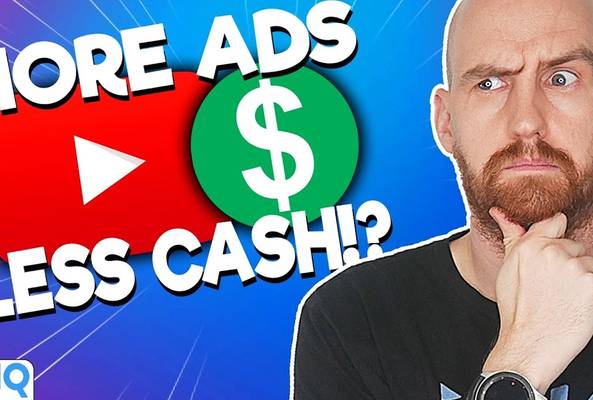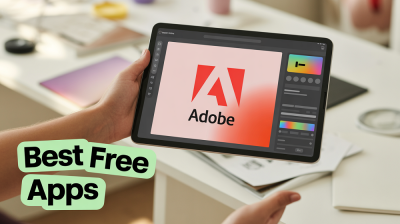Are you a parent wondering how your child can turn their creativity into cash on YouTube? You're not alone! Many kids are exploring their passions through this platform, from gaming and DIY crafts to vlogs and educational content. This guide will help you navigate the exciting world of YouTube monetization, ensuring your child’s journey is not only fun but also profitable.
Understanding YouTube Monetization

Monetizing a YouTube channel can seem daunting at first, but once you break it down, it becomes much more manageable. Here’s a simple guide to understanding how monetization works:
1. The YouTube Partner Program (YPP)
To start making money on YouTube, your child needs to join the YouTube Partner Program. Here are the eligibility requirements:
- At least 1,000 subscribers
- 4,000 watch hours in the past 12 months
- Compliance with all of YouTube’s policies and guidelines
- A linked AdSense account
Once these criteria are met, your child can apply for YPP, which opens the door to various monetization options.
2. Ad Revenue
The most common way to earn money is through ads. Here’s how it works:
- Ads are displayed on videos, and creators earn money based on ad views and clicks.
- The amount earned varies widely—typically from $0.01 to $0.03 per view, depending on factors like audience demographics and engagement.
3. Sponsored Content
As your child's channel grows, brands may reach out for sponsorship deals. This involves:
- Creating content that features a brand's product or service.
- Negotiating payment, which can range from a few hundred to thousands of dollars, depending on the channel's reach.
Sponsored content can be lucrative, but it’s crucial to ensure that sponsorships align with your child's values and audience interests.
4. Merchandise Sales
Another way to monetize is through merchandise. If your child has a loyal fan base, they can sell branded items like:
- T-shirts
- Stickers
- Hoodies
Platforms like Teespring or Redbubble can help set up online stores without upfront costs.
5. Memberships and Crowdfunding
Once a channel gains traction, your child might consider:
- YouTube Channel Memberships: Fans pay a monthly fee for exclusive perks.
- Patreon: A platform where fans support creators directly, often in exchange for special content.
6. Affiliate Marketing
Your child can also earn commissions by promoting products through affiliate links. This works like so:
- Your child shares a link to a product in their video description.
- If a viewer buys through that link, your child earns a percentage of the sale.
Understanding these monetization strategies can empower your child to make informed decisions about their YouTube channel and its content. As they navigate this exciting journey, remember that creativity and authenticity are key to building a successful channel!
Also Read This: How to Pray the Rosary Every Day Using YouTube Videos
3. Choosing the Right Content for Kids

When it comes to picking the right content for kids on YouTube, the options are nearly endless. But as a parent, you want to ensure that the content is not only engaging but also appropriate and beneficial for your child's development. Here are some popular categories that kids can explore:
- Toy Reviews: Kids love watching unboxings and reviews of the latest toys. If your child enjoys playing with toys, this could be a great niche!
- Gaming: If your child is into video games, they can create gameplay videos, tutorials, or even let viewers join them in live streams.
- DIY and Crafts: Crafting videos can inspire creativity. Your child can share their favorite projects, from simple arts and crafts to elaborate DIY builds.
- Education and Learning: Kids can create content that teaches others. This could be anything from math tutorials to science experiments!
- Vlogs: Daily or weekly vlogs offer a glimpse into your child's life, sharing their thoughts, activities, or adventures.
When choosing a content type, consider your child's interests and strengths. It’s important that they feel passionate about what they’re creating; this enthusiasm will resonate with their audience. Additionally, keep in mind the following tips:
- Age Appropriateness: Ensure that the content aligns with your child's age and maturity level. This will help avoid any content that could be too complex or unsuitable.
- Audience Engagement: Encourage your child to ask questions and respond to comments. Engaging with their audience helps build a community.
- Consistency is Key: Help your child commit to a schedule. Whether it’s weekly or bi-weekly, consistency can help grow their audience.
Ultimately, the right content is one that reflects your child's personality and interests while also being safe and age-appropriate. By guiding them in their content choice, you'll help set them up for a successful YouTube experience!
Also Read This: Finding and Listening to the To Kill a Mockingbird Audiobook on YouTube
4. Setting Up a YouTube Channel
Setting up a YouTube channel for kids is an exciting step, but it comes with a few important considerations. Let’s break it down into manageable steps:
- Create a Google Account: First, your child will need a Google account. Make sure to select the option for a child’s account if they are under 13. This helps manage privacy settings.
- Access YouTube: Once the account is created, log in to YouTube. You’ll find a “Create a Channel” option under the user icon in the top right corner.
- Pick a Channel Name: Choose a fun and memorable channel name that reflects the content they will be creating. This is their brand, so make it exciting!
- Customize the Channel: Decorate the channel with a profile picture and banner. Kids can use colorful images or their own artwork to make it unique!
- Set Up Channel Description: Write a brief description about the channel and what viewers can expect. Encourage your child to express their personality here!
Once the channel is set up, it's time to focus on privacy and safety. YouTube offers settings to control who can comment and who can see their videos:
- Turn Off Comments: Initially, you might want to disable comments until your child feels comfortable.
- Set Videos to Private or Unlisted: This way, only people with the link can view the videos, providing a layer of safety.
Finally, make sure to monitor your child’s activities on YouTube. Discuss the importance of online safety and what to do if they encounter inappropriate content. This ongoing dialogue will not only keep them safe but also help them navigate their YouTube journey with confidence!
Also Read This: Is YouTube a Social Media Platform? Analyzing Its Features
5. Safety Measures for Kids on YouTube
As exciting as the world of YouTube can be for young creators, it’s essential to prioritize safety. Here are some vital safety measures parents should take to ensure a secure online experience:
- Parental Controls: YouTube offers various parental control features. You can enable YouTube Kids, which provides a more controlled environment with age-appropriate content. This platform is designed specifically for younger audiences, filtering out unsuitable videos.
- Monitor Content: Regularly check the videos your child is watching and creating. Sit down with them to understand their interests and ensure they’re engaging with safe, positive content.
- Privacy Settings: Teach your child to keep personal information private. Ensure that their account settings are set to private, so only approved viewers can see their content. Remind them not to share personal details in their videos.
- Reporting Inappropriate Content: Make sure your child knows how to report any content that makes them uncomfortable. Encourage them to approach you if they encounter anything strange or upsetting.
- Screen Time Limits: Set clear boundaries for how much time your child spends on YouTube. Balance is key; ensure they have time for offline activities, like playing outside or reading.
By implementing these safety measures, parents can create a supportive and secure environment for their children’s YouTube ventures, allowing them to explore their creativity without undue risk.
Also Read This: Can I Use YouTube TV When I Travel? Exploring YouTube TV's Accessibility and Limitations
6. Engaging Your Young Creator
Encouraging your child’s creativity on YouTube can be a rewarding journey, but it’s essential to keep them engaged and motivated. Here are some fun ways to support and inspire your young creator:
- Collaborate: Work on projects together! Whether it’s brainstorming video ideas or filming, your involvement can make the process more enjoyable. Plus, it shows them that you’re invested in their passions.
- Set Goals: Help your child set realistic and achievable goals for their channel. For example, aim for a specific number of subscribers or create a certain number of videos each month. Celebrate their achievements to keep their motivation high!
- Encourage Creativity: Allow them to explore various content types—vlogs, tutorials, challenges, or even storytime videos. The more creative freedom they have, the more likely they’ll stay engaged.
- Teach Them Skills: Use this opportunity to teach valuable skills such as video editing, scriptwriting, or even public speaking. These skills will not only enhance their content but also contribute to their personal development.
- Community Interaction: Encourage them to interact with their viewers. Responding to comments or asking for viewer input on future videos can help them feel connected and valued.
By actively participating in their YouTube journey and providing guidance, you can help your child foster a love for creating content while developing valuable skills for the future.
Also Read This: How to Save Shorts on YouTube for Offline Viewing
7. Tips for Successful YouTube Videos
Creating engaging YouTube videos is both an art and a science. If your child is diving into the world of YouTube, here are some valuable tips to help them produce successful content that resonates with viewers!
- Find a Niche: Encourage your kid to pick a specific niche or theme. Whether it’s gaming, DIY crafts, or educational content, having a clear focus helps attract a dedicated audience. For instance, a channel specifically about “Minecraft tutorials” can draw in passionate gamers.
- Quality Over Quantity: It’s important to prioritize producing high-quality videos over simply churning out content. This means investing time in good lighting, clear audio, and thoughtful editing. A well-edited video can make all the difference in viewer retention.
- Engage with the Audience: Encourage your child to interact with viewers by responding to comments and asking questions. Building a community around their channel will keep viewers coming back for more!
- Catchy Thumbnails and Titles: Eye-catching thumbnails and intriguing titles can drastically improve click-through rates. Teach your child to create engaging visuals that reflect their video content accurately.
- Be Authentic: Authenticity is key! Viewers appreciate genuine personalities. Let your child express their unique voice and style, rather than trying to mimic popular creators.
- Consistent Posting Schedule: Regular uploads help maintain audience interest. Help your child set a realistic schedule, whether it’s weekly or bi-weekly, and stick to it.
- Learn from Analytics: YouTube provides analytics tools that can help understand what works and what doesn’t. Encourage your child to analyze their performance and adapt their strategies accordingly.
With these tips, your child can create engaging videos that not only entertain but also build a loyal community of followers. Remember, the journey of content creation is also about learning and adapting!
8. Legal Considerations and Guidelines
As your child embarks on their YouTube journey, it’s crucial to be aware of the legal considerations and guidelines that come into play. Here’s a breakdown to ensure a smooth and responsible experience.
- Age Restrictions: YouTube requires users to be at least 13 years old to create their own accounts. If your child is younger, they will need to operate the channel under parental supervision or through a family account.
- Copyright Issues: Using copyrighted material without permission can lead to videos being removed or the channel being banned. Teach your child to use royalty-free music and graphics, or create their own content to avoid copyright claims.
- Child Protection Laws: Be aware of laws like COPPA (Children's Online Privacy Protection Act) in the U.S., which requires parental consent for collecting personal information from children under 13. YouTube has specific policies regarding content made for kids to comply with these laws.
- Content Guidelines: Familiarize your child with YouTube’s community guidelines. Content that promotes hate speech, violence, or inappropriate behavior can result in strikes against the channel or even termination.
- Monetization Rules: If your child aims to monetize their channel, they must follow YouTube’s monetization policies. This includes complying with the YouTube Partner Program requirements, like having 1,000 subscribers and 4,000 watch hours in the past year.
- Privacy Considerations: Discuss the importance of privacy. Personal information, such as addresses or school names, should never be shared in videos or comments. It’s crucial for your child to understand the potential risks of oversharing.
By keeping these legal considerations in mind, you can help your child navigate their YouTube journey responsibly, ensuring they create content safely and legally. After all, it’s all about having fun while being mindful of the rules!
 admin
admin








